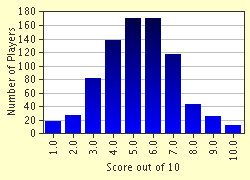Quiz Answer Key and Fun Facts
1. Celebration of the Christmas holiday is commanded in the Christian New Testament scriptures.
2. When does the Armenian Orthodox Church celebrate Christmas?
3. Who fixed December 25th as the official nativity date?
4. The Christmas date may have been set on December 25th in an effort to supplant the worship of what Roman god?
5. What plant, now used as a symbol of Christmas, was once associated with the Roman god Saturn and later used in Celtic tradition?
6. During whose reign did the practice of decorating Christmas trees first become popular in England?
7. This plant, now a Christmas symbol, was regarded as a divine branch by the Druids, and represented reconciliation.
8. Which of the following was not at the manger in the Biblical account of Christ's birth?
9. According to modern Christian legend, what does the candy cane represent?
10. In the East, St. Nicholas was regarded as the patron saint of whom?
Source: Author
skylarb
This quiz was reviewed by FunTrivia editor
minch before going online.
Any errors found in FunTrivia content are routinely corrected through our feedback system.
